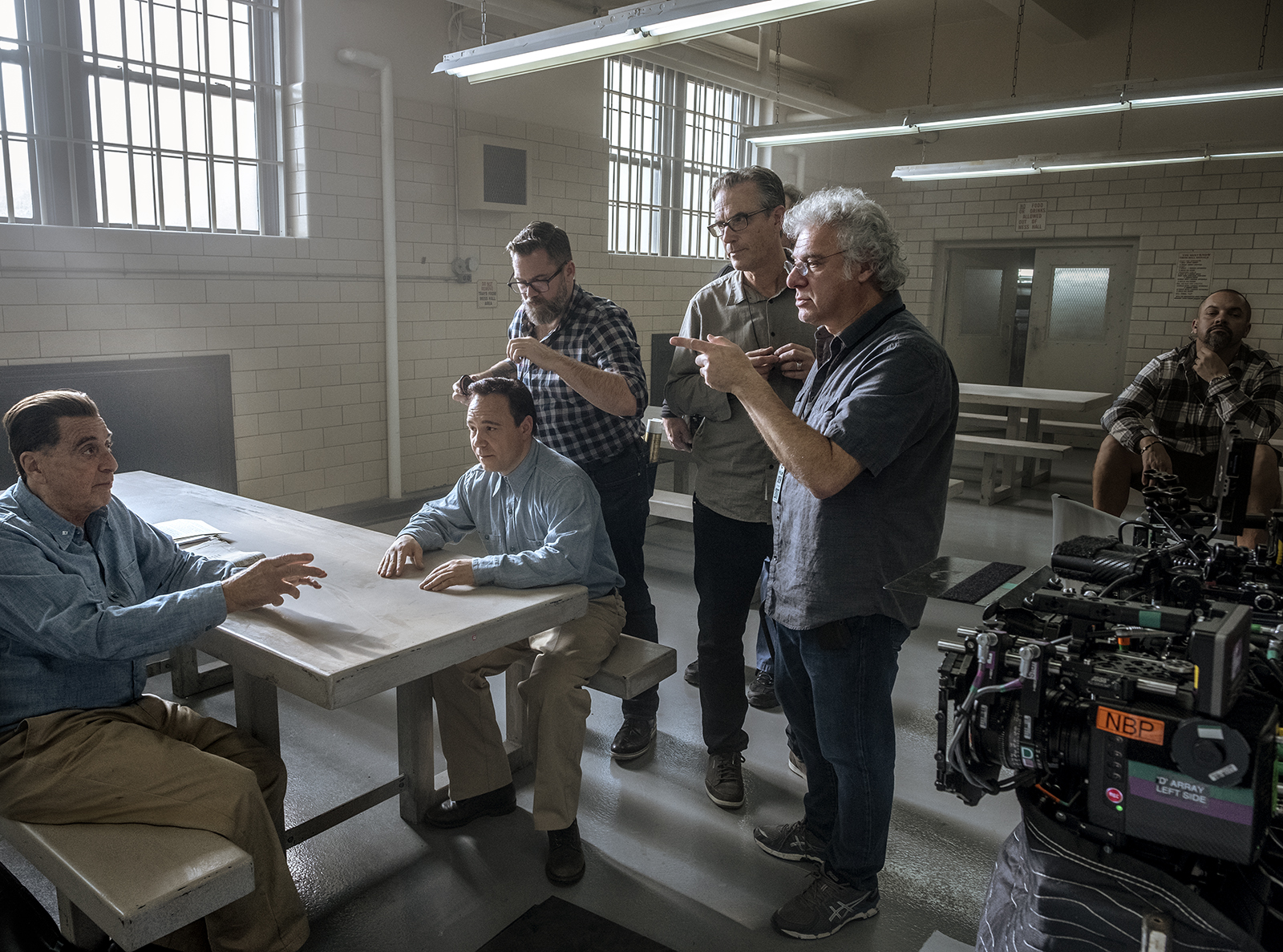Q&A: ‘The Irishman’ visual effects supervisor talks tech, transformation in film industry

Working alongside Martin Scorsese on his Oscar-nominated film “The Irishman,” visual effects supervisor Pablo Helman put technology to the test as new software revolutionized the use of CGI on the actors involved. (Courtesy of Industrial Light & Magic)

By EJ Panaligan
Feb. 6, 2020 11:12 p.m.
Robert De Niro wasn’t going to wear markers on his face or a helmet with little cameras when Pablo Helman signed on as the visual effects supervisor for “The Irishman.”
Abiding by those wishes was a new challenge for Helman, as the alumnus’ short list of films he’s worked on as the visual effects supervisor are fairly CGI-heavy. For “Star Wars: Episode II – Attack of the Clones” and “War of the Worlds,” both of which earned him Oscar nominations, he said he was often looking at the overall effects needed for fantasy world-building. Helman is nominated again at this year’s Oscars for Best Achievement in Visual Effects, but this time it’s for Martin Scorsese’s “The Irishman,” for which he found himself calibrating the finer facial details necessary for de-aging the characters.
Helman spoke with the Daily Bruin’s Edgerrin Panaligan about how this film differed from his previous work, his relationship with Scorsese and how this film stands out among the rest of this year’s best visual effects nominees.
Daily Bruin: Industrial Light & Magic developed an entirely new software, FLUX, for visual effects like the de-aging of actors. How did that technology play into your work on “The Irishman”?
Pablo Helman: The camera rig (used to shoot the film) is a three-camera solution with a center camera for the director, and the other two are infrared cameras. The FLUX software does a lot better in soft light instead of regular theatrical light, and because we couldn’t change the light, we flooded the actors with infrared light. It is a light that the human eye cannot see, but the software can.
The software takes a look at what is seen in infrared and computes a triangulation of whatever’s in front of the camera, then creates 3D geometry from it. It compares that geometry to what’s in the (camera) plate and forms the geometry to capture performances on a frame-by-frame basis until it completes the scene.
In the case of capturing and retargeting that performance, I think the software did an incredible job. Capturing is a science thing, but retargeting and (molding) that performance into a younger person is a design thing. It’s a vision for how you want your character to behave. It’s about getting that behavioral likeness that we like to capture in a very natural way and never (have the audience) question whether this character is real or not.
DB: How was the work on “The Irishman” different than the previous CGI-intense films you’ve also worked on like “Star Wars” and “Terminator 3: Rise of the Machines”?
PH: The whole movie is based on performance, meaning the camera is (positioned) forehead to chin, looking at these actors talking to each other. Deconstructing performances and understanding what makes somebody communicate a specific feeling to another person through (facial expressions) has been an incredible learning experience for me.
Understanding the difference between a smile and a wince could be two pixels on the computer. It is a very subtle way of working that’s completely different than the films I’ve done before, where there’s action in the middle of everything and there’s a bunch of things that move you visually.
DB: What has stood out to you in working with Scorsese in particular?
PH: I know (Scorsese) very well, and he knows me very well. I think it has been an incredible experience working with him. Not only the stories he tells about films, but also the specific technical knowledge, things that have to do with framing, camera movement and lens choice.
He told me out of the blue that the key part of what he does is he falls in love with the characters. Once he falls in love with characters, he can’t let them go. That’s part of the reason why the movie takes its time to tell (the characters’) stories, because that’s the way he perceives the story to be told.
DB: What do you think gives “The Irishman” more of an upper hand in winning this year’s Oscar for Best Achievement in Visual Effects?
PH: In my field, it’s always (about) putting out stuff that nobody has seen before. This (film) is a good case of innovation – it’s pushing filmmaking to a different level. The actors for the past 10 years have been wearing markers on their faces to do performance capture. That takes two hours of makeup, plus the calibration of cameras and them not acting with their partners (in the same scene).
The emphasis of this film was to take the technology away from the actors so that they could do their jobs, whereas in the other movies we’re going against, the technology is right in the middle of things.
The innovation lets the actors do what they’re hired to do, what they’re best at, which is to give an incredible performance. None of the other (nominated) projects have anything similar.


